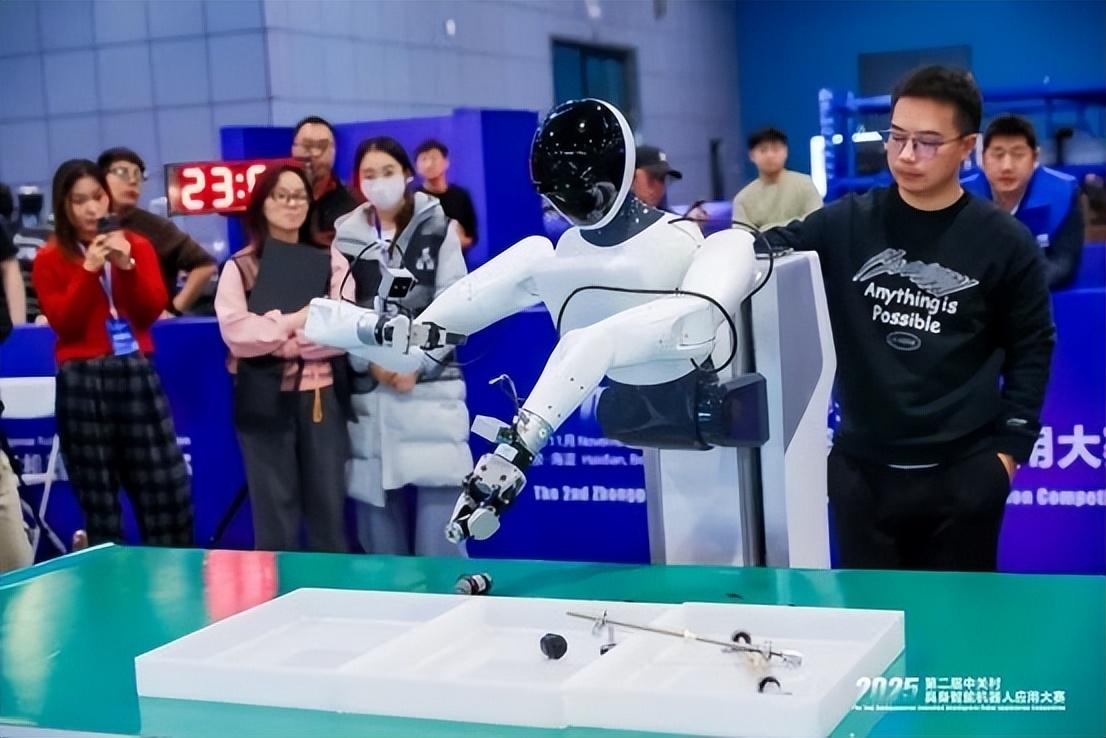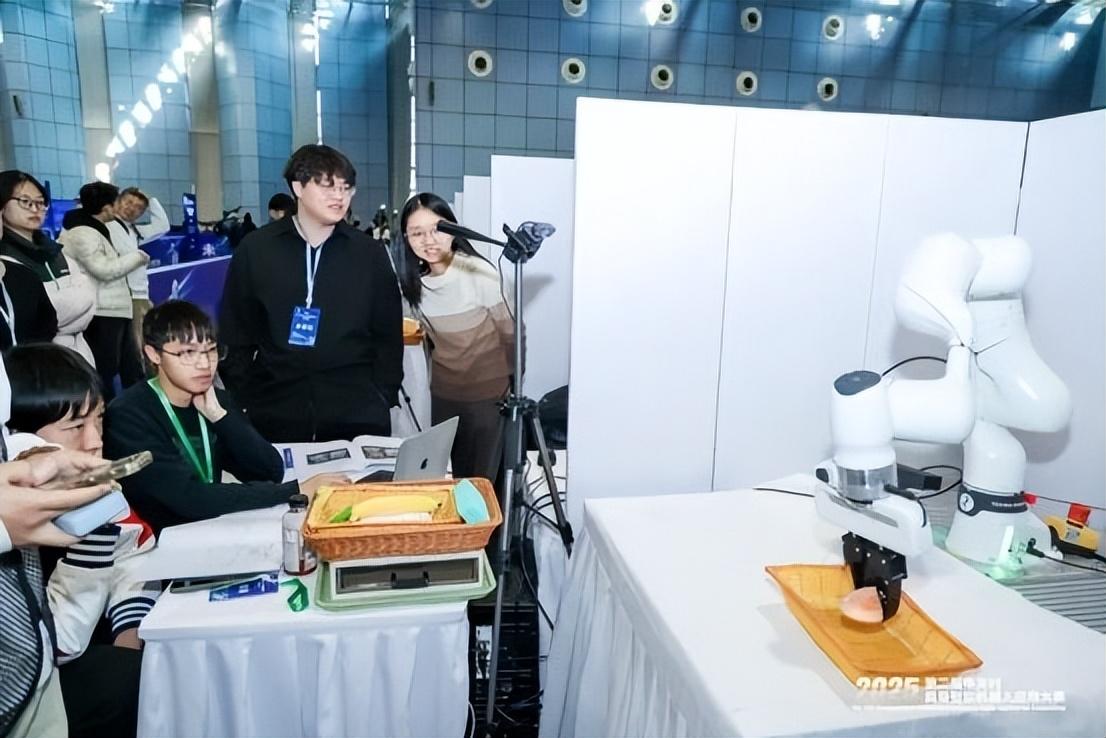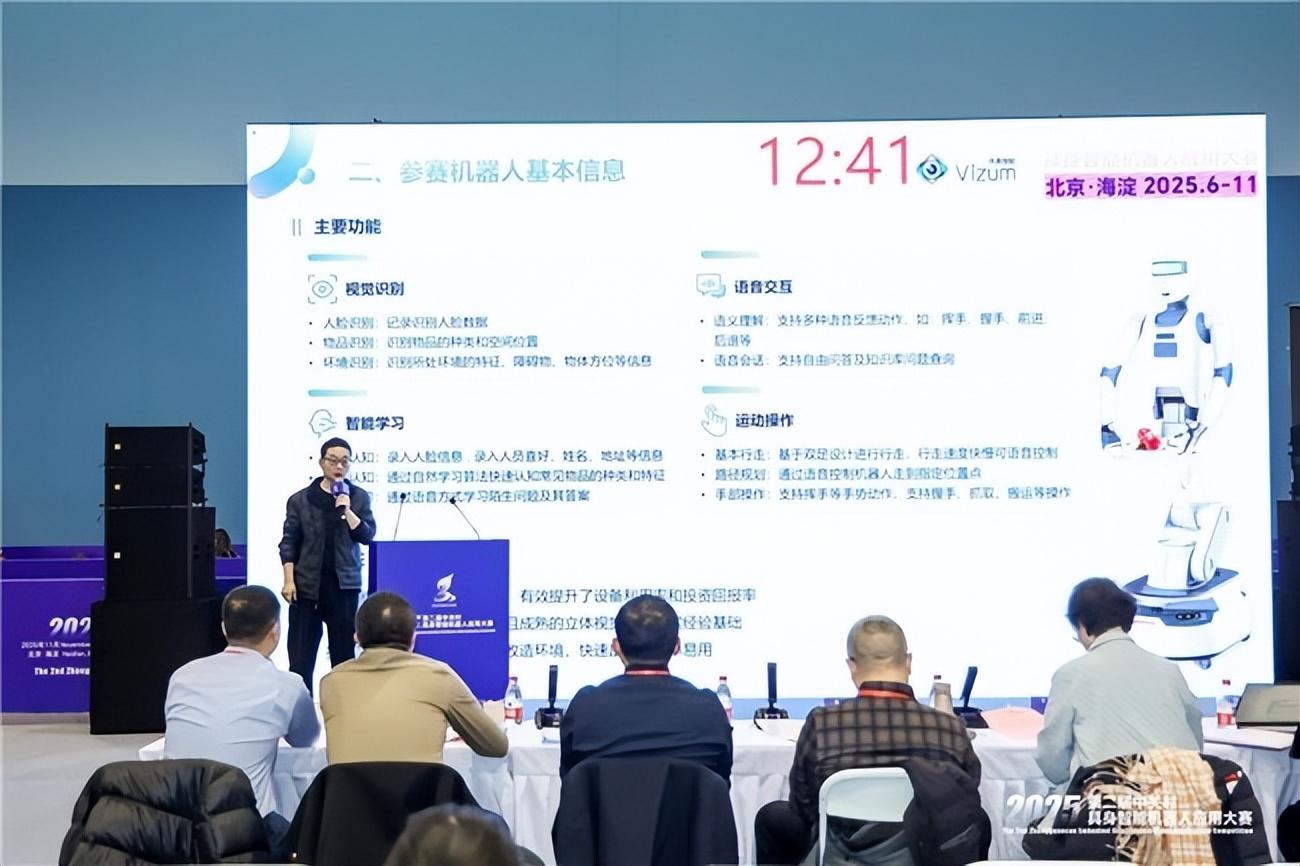大赛核心亮点
1. 2025年11月17-18日在北京中关村举办第二届具身智能机器人应用大赛,主题为“具身引智、应用未来”,主办方为中关村科学城管委会等机构,旨在推动机器人技术实用化和产业化。
2. 赛事聚焦家庭服务、商用服务、工业制造、居家服务、安全处置等真实应用场景,通过三大赛道检验机器人能力。
3. 精彩案例包括灵御智能团队在遥操作原料搬运和垃圾拣选任务中分别仅用1分钟和3分03秒完成,北京航空航天大学和北京科技大学团队顺利执行车身检测任务,灵心巧手团队在工业关节组装中用时42秒。
技术突破展示
1. 具身智能模型能力挑战赛分为“具身大脑”和“具身小脑”:前者基于RoboBrain2.0模型,微调优化空间理解、感知理解、预测推理等能力;后者基于RoboBrain-X0模型,提升物理场景执行操作和跨平台部署能力。
2. 具身智能场景应用赛设置自主完成和遥操作完成任务,涉及车身检测、物料分选、咖啡制作等实操,体现环境适应性。
3. 学术前沿与产业生态赛道展示多足机器人、轮足机器人、软体机器人等机构设计,以及视觉传感器、力控传感器、灵巧手等关键零部件创新。
互动与影响
1. 闭幕活动“人机共话・机甲盟友局”包括机器人走秀和萌宠互动,促进人机协作深度对话。
2. 大赛汇聚国内外顶尖科研团队和创新企业,为全球智能机器人产业发展奠定基础,提升影响力。
产品研发方向
1. 大赛展示的具身智能模型(如RoboBrain2.0和RoboBrain-X0)提供新技术基础,可用于产品优化,例如空间理解与执行操作能力提升品牌产品智能化水平。
2. 应用场景如商用服务中的咖啡制作和物品递送,反映出消费趋势向自动化服务扩展,为产品创新提供实际参照。
消费趋势洞察
1. 用户行为在家庭服务和居家服务场景中体现偏好便利性和高效互动,例如闭幕活动中机器狗互动被接受,显示消费者对智能机器人好奇和好感提升。
2. 品牌参与机会:参赛企业灵御智能、灵心巧手团队等展示技术实力,品牌可借鉴产学研合作模式强化产品研发生态。
潜在启发点
1. 基于工业制造任务如物料分选和关节组装,品牌可关注用户需求定制化产品设计。
2. 从赛事政策(如中关村创新高地战略)推导,消费趋势朝向智能化普及,品牌需把握技术落地时机。
政策背景解读
1. 大赛支持北京市及海淀区打造全国具身智能创新高地战略,表明政策导向产业发展机会。
2. 以赛促产融对接方式提供潜在扶持框架,鼓励卖家参与区域创新项目。
增长市场和机会
1. 消费需求变化:工业制造、家庭服务等场景显示自动化服务需求增长,如车身检测和咖啡制作任务,卖家可开发相应解决方案。
2. 事件应对措施:案例中团队在复杂任务中成功,卖家可学习场景适应性策略以应对市场变化。
风险与机会提示
1. 正面影响:大赛推动产业高质量发展,为卖家提供新技术参照(如遥操作),降低运营风险。
2. 可学习点:最新商业模式如产学研合作链条,卖家可效仿加强技术创新和合作。
3. 机会提示:闭幕活动促进对话,卖家可借此平台拓展人脉和资源。
产品生产需求
1. 工业制造场景如物料分选、关节组装任务显示对高精度生产和灵活设计需求,例如灵心巧手团队的组装任务体现零部件精细化要求。
2. 关键零部件创新如视觉传感器、力控传感器和灵巧手在赛事应用,为工厂提供设计参考。
商业机会启示
1. 大赛中多足机器人、轮足机器人等机构设计应用在真实任务,工厂可进军智能制造领域开辟新市场。
2. 推进数字化启示:遥操作和自主完成任务技术展示数字化转型潜力,工厂可提升生产线自动化水平。
产业化实践
1. 技术成果如具身小脑模型跨平台部署能力,推动从设计到可用性过渡,提供生产优化路径。
2. 学术前沿赛道展示产学研结合链条,工厂可借鉴整合基础研究加速产品落地。
行业发展趋势
1. 大赛推动具身智能技术向实用化和产业化发展,趋势包括整合感知、决策与行动能力的智能体应用扩展。
2. 未来市场方向:服务领域如商用和家庭应用潜力巨大,显示服务需求多样化增长。
新技术与应用
1. 模型技术突破:RoboBrain2.0优化空间理解和预测推理,RoboBrain-X0增强物理执行操作,为新服务开发提供工具。
2. 客户痛点解决:场景应用赛中复杂环境感知决策挑战,示例如车身检测任务,服务商可参考提供高效解决方案。
问题与对策
1. 痛点如在应急处置任务中快速响应,解决方案通过赛事案例(如垃圾拣选)验证可行模型训练方法。
2. 从产业生态展示中,服务商可提炼跨平台部署策略以满足不同客户需求。
平台做法与管理
1. 大赛采用以赛促生态构建和产融对接模式,平台商可借鉴吸引企业参与策略。
2. 平台招商机制:通过赛事设置多赛道细分赛项,成功汇聚国内外高校和企业团队。
商业需求与运营
1. 对平台需求:参赛方展示技术如具身智能模型,反映创新平台需支持多领域协同问题解决。
2. 风险管理:赛题还原真实工作环境(如工业任务),平台商可设计任务规避执行风险。
3. 最新风向:闭幕闭门活动“人机共话・机甲盟友局”促进交流,平台商可优化运营促进跨界融合。
机会提示
1. 从产学研链条中,平台可强化生态连接器角色,把握智能机器人产业增长机遇。
2. 风险规避通过赛事规则(如任务分类)提供框架参考。
产业新动向
1. 模型技术如具身大脑能力挑战空间理解和任务规划,显示新突破在感知推理维度。
2. 应用潜力扩展:场景应用赛在工业、商用等任务证明具身智能在物理环境整合潜力。
新问题与研究点
1. 挑战如从算法可行性转向物理可用性(如具身小脑模型),引发产业实际落地新问题。
2. 商业模式启示:赛事产学研协同生态展示完整创新链条,为学术转化为产业提供模式参考。
政策建议与影响
1. 从北京战略目标推导,政策可推动区域创新加速,增强全球影响力。
2. 前沿成果如多足机器人设计,启发明智监管法规支持技术迭代。
返回默认


















